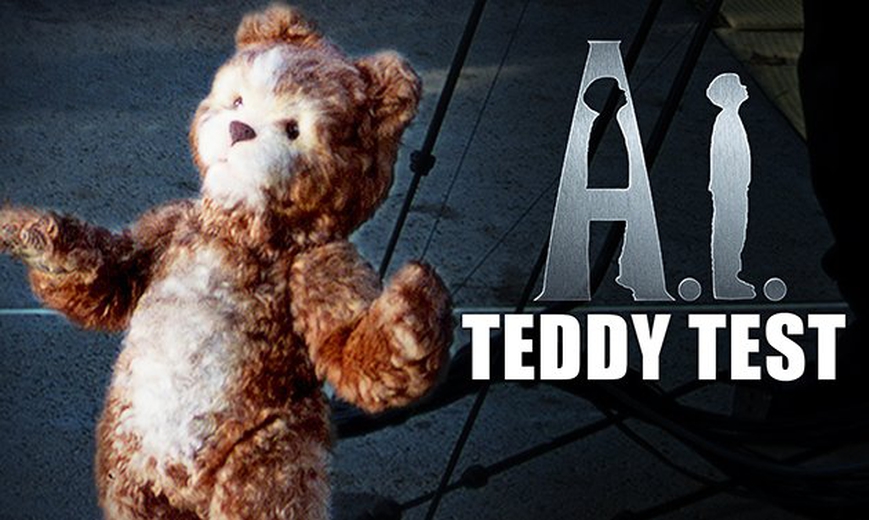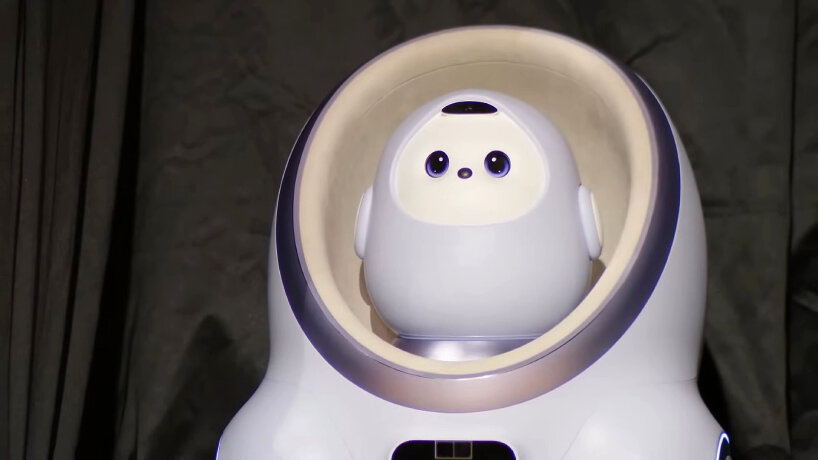
The Next Generation of Play: A Deep Dive into AI Toy Innovation and Future Trends
The Dawn of a New Era: How AI is Redefining the Toy Box
For generations, toys have been the silent partners in a child’s development, from simple wooden blocks that teach spatial reasoning to dolls that foster imaginative play. But the toy box is undergoing a seismic shift. The static, passive playthings of the past are being replaced by dynamic, interactive, and intelligent companions powered by Artificial Intelligence. This evolution marks a pivotal moment in the history of play, transforming toys from mere objects into adaptive partners that can teach, entertain, and even provide companionship. The latest AI Toy Innovation News isn’t just about adding a microchip to a plush bear; it’s about embedding sophisticated machine learning algorithms, advanced sensor arrays, and cloud-based neural networks into the very fabric of play. This article delves into the comprehensive world of AI toys, exploring the core technologies driving this revolution, their profound applications beyond the playroom, and the critical ethical considerations we must navigate as we step into this intelligent new world of interaction and entertainment. From educational tools to therapeutic aids, the future of toys is intelligent, responsive, and deeply personal.
The Evolving Landscape of Intelligent Play: Key Trends and Developments
The current wave of smart toys represents a quantum leap from their predecessors. While electronic toys have existed for decades, their interactions were largely pre-programmed and repetitive. The latest Smart Toy News highlights a fundamental change in this paradigm, driven by AI’s ability to facilitate genuine learning and adaptation. This shift is creating a diverse and rapidly expanding market, with innovations emerging across numerous categories.
From Pre-Programmed Responses to Truly Adaptive Personalities
The key differentiator in modern AI toys is their ability to move beyond simple, scripted responses. Early “robotic” toys operated on a basic “if-this-then-that” logic. Press a button, hear a pre-recorded phrase. In contrast, today’s AI-powered toys leverage machine learning to personalize the user experience. An AI Companion Toy might learn a child’s name, their favorite color, or the types of stories they enjoy. Over time, its personality can evolve based on these interactions, creating a unique bond that feels more authentic and engaging. This is a recurring theme in recent Robot Toy News and Interactive Doll News, where the focus is on creating long-term engagement through evolving digital personalities. The rise of Programmable Toy News also points to this trend, allowing users to customize behaviors and create their own interactive experiences, further blurring the line between toy and tool.
A Spectrum of Innovation Across Toy Categories
AI is not a monolithic technology; its application in the toy industry is incredibly diverse, leading to a vibrant ecosystem of smart playthings. The latest AI Plush Toy News showcases cuddly companions that can recognize voices and respond to touch with soothing sounds or stories. Meanwhile, Educational Robot News is dominated by products designed to make complex subjects accessible. These often fall under the umbrella of STEM Toy News, with devices that teach children the fundamentals of programming through hands-on activities. We see this in Coding Toy News, featuring robots that follow commands written in simple, block-based code. The innovation extends to other categories as well, with AI Drone Toy News reporting on drones with autonomous flight capabilities and object avoidance, and AR Toy News exploring hybrid experiences that overlay digital content onto the physical world. From AI Pet Toy News featuring lifelike robotic animals to complex AI Game Toy News, the industry is brimming with new concepts.
Under the Hood: The Core Technologies Driving AI Toy Innovation
The magic of an AI toy isn’t just in its charming design; it’s in the sophisticated fusion of hardware and software working in concert. Understanding these core technologies is essential to appreciating their capabilities and limitations. The latest AI Toy Research News points to rapid advancements in three key areas: sensory input, cognitive processing, and physical interaction.

Sensory Input and Perception: The Toy’s Five Senses
For an AI toy to interact intelligently, it must first perceive its environment. This is achieved through an array of sensors, as frequently highlighted in AI Toy Sensors News. High-fidelity microphones are crucial for Voice-Enabled Toy News, allowing toys to understand commands and engage in conversation through Natural Language Processing (NLP). Cameras, often paired with computer vision algorithms, enable facial recognition, allowing a Humanoid Toy News feature to recognize its owner or even interpret their emotions. Other sensors include accelerometers and gyroscopes to detect motion, capacitive touch sensors to respond to physical contact, and ambient light sensors to adjust behavior based on the time of day. This rich sensory data is the raw material that fuels the toy’s intelligence.
The “Brain”: AI, Machine Learning, and Cloud Connectivity
Once data is collected, it must be processed. Simpler tasks can be handled by an onboard processor, but the truly advanced capabilities often rely on a connection to the cloud. This is where the heavy lifting of AI and machine learning occurs. A Toy AI Assistant News feature, like answering complex questions, requires access to vast databases, which is only possible via the cloud. This connectivity, a cornerstone of AI Toy App Integration News, also allows for continuous improvement. Manufacturers can push AI Toy Updates News to enhance features, patch security vulnerabilities, and add new content, ensuring the toy becomes better over time. This model relies on a robust Toy AI Platform News backend that manages data processing, learning algorithms, and content delivery for thousands or even millions of devices simultaneously.
Actuation and Interaction: Bringing the Toy to Life
The final piece of the puzzle is how the toy responds and interacts. This “actuation” is what makes the intelligence tangible. In a robotic pet, this involves a complex system of motors and servos that mimic lifelike movements, a frequent topic in Robotic Pet News. For a storytelling plushie, it’s a high-quality speaker and perhaps expressive LED eyes. The trend towards customization is also growing, with Modular Robot Toy News and Robot Building Block News showcasing kits that allow users to build and program their own creations. From the intricate movements of an AI Vehicle Toy News to the simple, responsive lights on a puzzle, the output is just as critical as the input and processing.
More Than Just Toys: Expanding Applications in Health, Education, and Companionship
Perhaps the most profound impact of AI in the toy industry lies in its potential to transcend traditional play. These intelligent devices are evolving into powerful tools with applications in specialized education, therapy, and healthcare, creating entirely new markets and possibilities for social good.
Revolutionizing STEM and Creative Learning
The educational sector has been an early and enthusiastic adopter of AI-powered play. AI Learning Toy News is filled with examples of smart toys that function as personalized tutors. An AI Language Toy News product can help a child practice vocabulary and pronunciation, offering real-time feedback and adapting lessons to their proficiency level. In the creative domain, AI Storytelling Toy News features devices that can co-create narratives with a child, prompting them with ideas and weaving their choices into a unique tale. Similarly, AI Drawing Toy News and AI Art Toy News are exploring collaborative art, where an AI can suggest colors or complete parts of a drawing. From AI Musical Toy News that teaches composition to Smart Construction Toy News that guides complex builds, these toys make learning interactive, personalized, and, most importantly, fun.

Therapeutic and Assistive Companions
One of the most exciting frontiers is the use of AI toys as companions and therapeutic aids. For older adults, particularly those facing loneliness or cognitive decline, an AI Companion Toy can offer significant benefits. The latest AI Plushie Companion News reports on robotic pets designed to provide comfort and stimulate social engagement without the caregiving demands of a real animal. These companions can be programmed to provide medication reminders, initiate simple conversations, or play familiar music, offering a sense of routine and connection. This technology holds particular promise for individuals with Alzheimer’s and dementia, where such interactions can help reduce agitation and improve mood. Similar applications are being explored for children with developmental disorders, using AI toys to teach social cues and emotional regulation in a safe, non-judgmental environment.
Building a Connected Ecosystem
The rise of AI toys is also fostering a vibrant community and commercial ecosystem. A dedicated AI Toy Community News hub allows users to share creations, write code, and exchange tips. This is supported by a growing library of AI Toy Tutorials News. New business models are emerging, such as AI Toy Subscription News services that provide ongoing content and new experiences. A centralized AI Toy Marketplace News allows developers to sell new apps or personality packs for a toy, while AI Toy Collaboration News highlights partnerships between toy companies and tech giants. This ecosystem is fueled by a constant stream of innovation from both established players and agile startups, often showcased at events covered by AI Toy Exhibition News.
Charting a Responsible Path Forward: Safety, Ethics, and Design Considerations
As AI toys become more integrated into our lives, it is imperative to address the significant ethical and safety challenges they present. The very features that make them so compelling—their ability to listen, see, and learn—also make them potential vectors for privacy invasion and developmental risks. A responsible approach requires a proactive stance from developers, parents, and regulators.

The Privacy and Security Conundrum
The most pressing concern, as highlighted in AI Toy Safety News, is data privacy. An internet-connected toy with a microphone and camera is a potential listening device in the home. The data it collects—a child’s voice, images of the room, conversation topics—is incredibly sensitive. A data breach could expose this information to malicious actors. Therefore, robust security measures, including end-to-end encryption and secure data storage, are non-negotiable. Furthermore, the principles of AI Toy Ethics News demand transparency. Parents must be clearly informed about what data is collected, how it is used, and who it is shared with. Vague privacy policies are unacceptable; clear, concise, and accessible information is essential for building trust.
Best Practices for Developers and Consumers
Beyond security, there are important developmental considerations. We must design toys that augment, rather than replace, human interaction and traditional play. The latest AI Toy Design News emphasizes creating experiences that encourage collaboration, creativity, and outdoor activity. For consumers, it’s crucial to research a AI Toy Brand News‘s reputation regarding security and privacy before making a purchase. Reading AI Toy Reviews News can provide insight into a product’s real-world performance and potential pitfalls. Parents should utilize parental controls, set limits on screen time, and engage in play with their children and the AI toy to ensure it remains a tool for growth, not a substitute for connection. Ultimately, the goal is to strike a balance, harnessing the power of AI to enhance play without diminishing the essential, irreplaceable value of human relationships.
Conclusion: The Intelligent Future of Play
The integration of artificial intelligence is irrevocably changing the toy industry, pushing the boundaries of what we consider “play.” We are moving from a world of static objects to one of interactive, learning ecosystems. The latest AI Toy Trends News shows a clear trajectory towards more personalized, educational, and even therapeutic experiences. From AI Toy Prototypes News hinting at emotionally intelligent companions to AI Toy Future Concepts News exploring brain-computer interfaces, the innovation pipeline is rich with possibility. However, this exciting future carries a profound responsibility. The success of this revolution will not be measured solely by technological prowess, but by our collective ability to prioritize safety, protect privacy, and design ethically. By fostering a transparent and conscientious approach, we can ensure that the next generation of toys not only entertains but also enriches, educates, and empowers users of all ages in a responsible and meaningful way.



